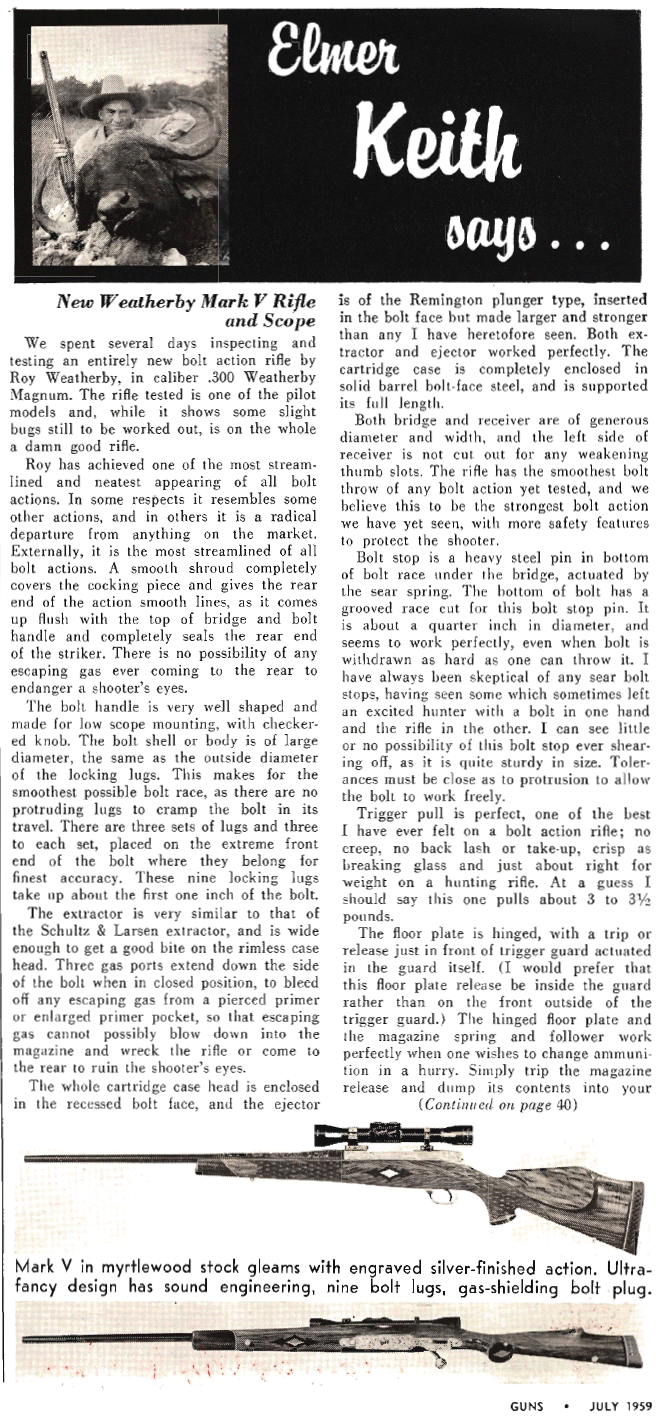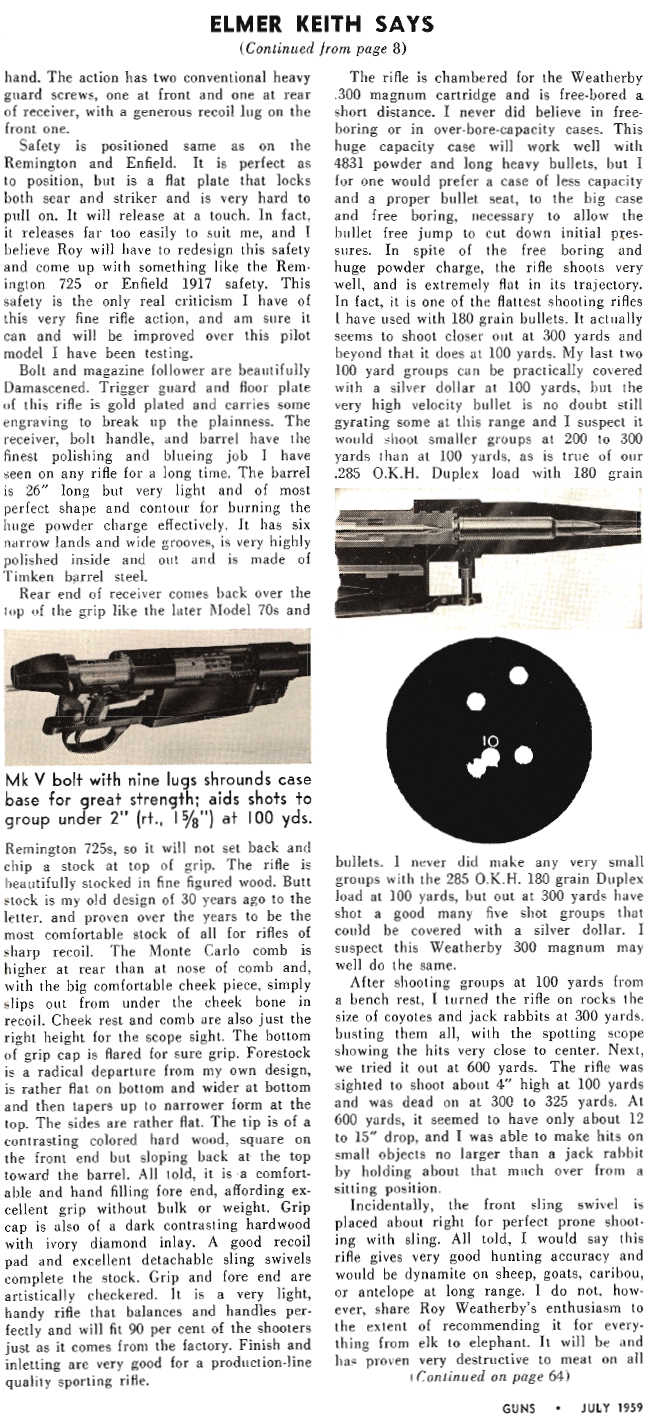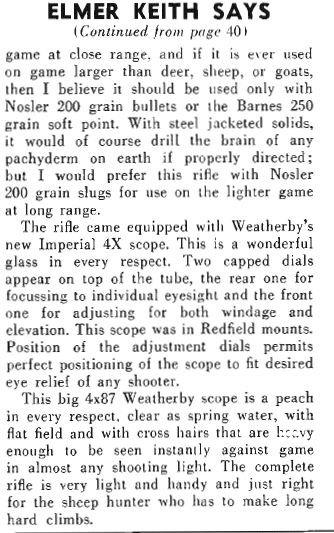The following article by Elmer Keith is from his column in the July 1959 issue of GUNS magazine. It is Keith's review of the then new Weatherby Mark V rifle.










 I spent a number of years living in the Sacramento Valley of California where walnut trees abound in about every variety known to man. This, in turn, means there were a number of small stock making companies there that specialized in turning out large quantities of semi-inletted gun stocks. And this led to a very popular hobby among rifle enthusiasts there known as "rolling your own," or building rifles to your own specifications.This is one such example of our rifle nuttery. The stock is a piece of Northern California English walnut, finished with about a dozen coats of spray-on Tru Oil, fine sanded between coats and finished out with 0000 steel wool to break the wet-looking gloss. After this the sheen was restored in a bit more subdued way with Birchwood Casey Stock Sheen and Conditioner. We did a lot of glass bedding on these rifles, usually from stem to stern, with the barrel free floated forward of the chamber. Our favorite products were Micro-Bed, and Accraglas Gel. Naturally, the glass bedding was always completed before the stock finish was applied.
I spent a number of years living in the Sacramento Valley of California where walnut trees abound in about every variety known to man. This, in turn, means there were a number of small stock making companies there that specialized in turning out large quantities of semi-inletted gun stocks. And this led to a very popular hobby among rifle enthusiasts there known as "rolling your own," or building rifles to your own specifications.This is one such example of our rifle nuttery. The stock is a piece of Northern California English walnut, finished with about a dozen coats of spray-on Tru Oil, fine sanded between coats and finished out with 0000 steel wool to break the wet-looking gloss. After this the sheen was restored in a bit more subdued way with Birchwood Casey Stock Sheen and Conditioner. We did a lot of glass bedding on these rifles, usually from stem to stern, with the barrel free floated forward of the chamber. Our favorite products were Micro-Bed, and Accraglas Gel. Naturally, the glass bedding was always completed before the stock finish was applied. The metal is a Mark X Whitworth Mauser action fitted with a Shilen medium weight barrel cut to 23 inches and chambered for the 6.5x55mm Swedish Mauser cartridge. The rifle is too heavy to be carried as a hunting rifle, so I have it set up as a ground critter gitter with a 6x24 AO scope. My favorite load fires a 120 grain Nosler Balistic Tip bullet at 3100 fps with minute of angle accuracy. This means the little 6.5x55 cartridge is knocking right on Mr. .270's front door in a modern, strong action. I have also gotten varmint rifle accuracy with 85 grain and 100 grain Sierra bullets, but surprisingly without any appreciable increase in velocity over the 120 grain bullet. Go figger. One should definitely not try any of these loads in a military Swedish Mauser rifle as they are much too hot for those guns and will damage them right away.
The metal is a Mark X Whitworth Mauser action fitted with a Shilen medium weight barrel cut to 23 inches and chambered for the 6.5x55mm Swedish Mauser cartridge. The rifle is too heavy to be carried as a hunting rifle, so I have it set up as a ground critter gitter with a 6x24 AO scope. My favorite load fires a 120 grain Nosler Balistic Tip bullet at 3100 fps with minute of angle accuracy. This means the little 6.5x55 cartridge is knocking right on Mr. .270's front door in a modern, strong action. I have also gotten varmint rifle accuracy with 85 grain and 100 grain Sierra bullets, but surprisingly without any appreciable increase in velocity over the 120 grain bullet. Go figger. One should definitely not try any of these loads in a military Swedish Mauser rifle as they are much too hot for those guns and will damage them right away.






